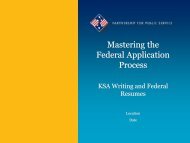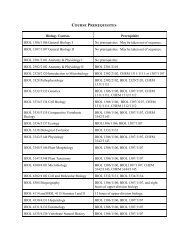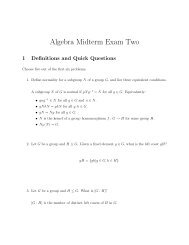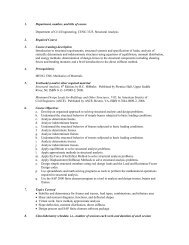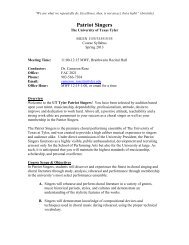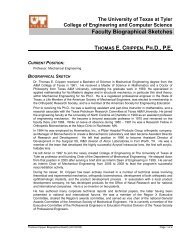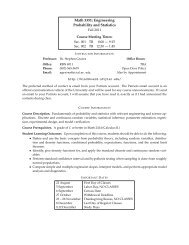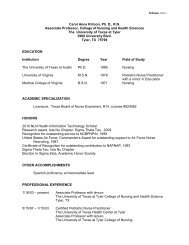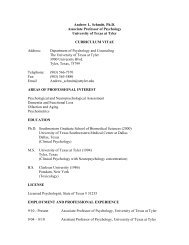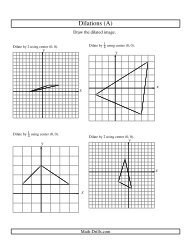Interactions between Representation Theory, Quantum Field Theory ...
Interactions between Representation Theory, Quantum Field Theory ...
Interactions between Representation Theory, Quantum Field Theory ...
- No tags were found...
You also want an ePaper? Increase the reach of your titles
YUMPU automatically turns print PDFs into web optimized ePapers that Google loves.
Adaptive Coherence Conditioning<br />
Robert J. Bonneau<br />
Air Force Office of Scientific Research<br />
Many applications in sensing and pattern recognition involve situations where the size of<br />
the vector space required to detect and identify a target is unknown a-priori. Examples of<br />
this situation occur in sensing applications where the noise subspace is unknown or in<br />
pattern recognition where the sample support of the space is not known to distinguish one<br />
object from another. We propose a method whereby the measurement vector space can<br />
be adaptively resized depending the on the Bayesian risk of the estimators involved.<br />
We will first develop a Lagrange minimization strategy which parallels some recent<br />
Lasso techniques of trading coherence for Bayesian risk in selecting the size of the vector<br />
space necessary for a given detection problem. We then develop the adaptive coherence<br />
updating strategy based on a Newton gradient approach to assess the Bayesian risk at<br />
each stage of a detection problem and then update the coherence based on the steepest<br />
gradient decent until the permitted risk level is met. We will then show risk bounds for<br />
statistical distributions as a function of coherence, show the correspondence in<br />
performance to different statistical estimators, and show the impact of the technique in<br />
performance of detecting targets in simulated tomographic imagery.<br />
<strong>Quantum</strong> Computational Curvature and Jacobi <strong>Field</strong>s<br />
Howard E. Brandt<br />
U.S. Army Research Laboratory<br />
Recent developments in the differential geometry of quantum computation are exposited.<br />
In the Riemannian geometry of quantum computation [1]-[4], the quantum evolution is<br />
described in terms of the special unitary group of n-qubit unitary operators with unit<br />
determinant. The group manifold is taken to be Riemannian. To elaborate on several<br />
aspects of the methodology, the Riemannian curvature, Jacobi equation, and lifted Jacobi<br />
equation on the group manifold are reviewed. Conjugate points and the so-called<br />
geodesic derivative are also addressed. This is important for investigations of the global<br />
characteristics of geodesic paths in the group manifold, and the determination of optimal<br />
quantum circuits for carrying out a quantum computation. Several significant issues of<br />
the methodology are emphasized.<br />
[1] M. R. Dowling and M. A. Nielsen, “The Geometry of <strong>Quantum</strong> Computation,”<br />
<strong>Quantum</strong> Information and Computation 8, 0861-0899 (2008).<br />
[2] H. E. Brandt, “Riemannian Geometry of <strong>Quantum</strong> Computation,” to appear in<br />
Nonlinear Analysis (2008).<br />
[3] H. E. Brandt, “Riemannian Curvature in the Differential Geometry of <strong>Quantum</strong><br />
Computation,” to appear in Physica E (2009).<br />
[4] H. E. Brandt, “Riemannian Geometry of <strong>Quantum</strong> Computation,” AMS Short Course<br />
Lecture, to appear in Proc. Symposia in Applied Mathematics., American Mathematical<br />
Society (2009).



